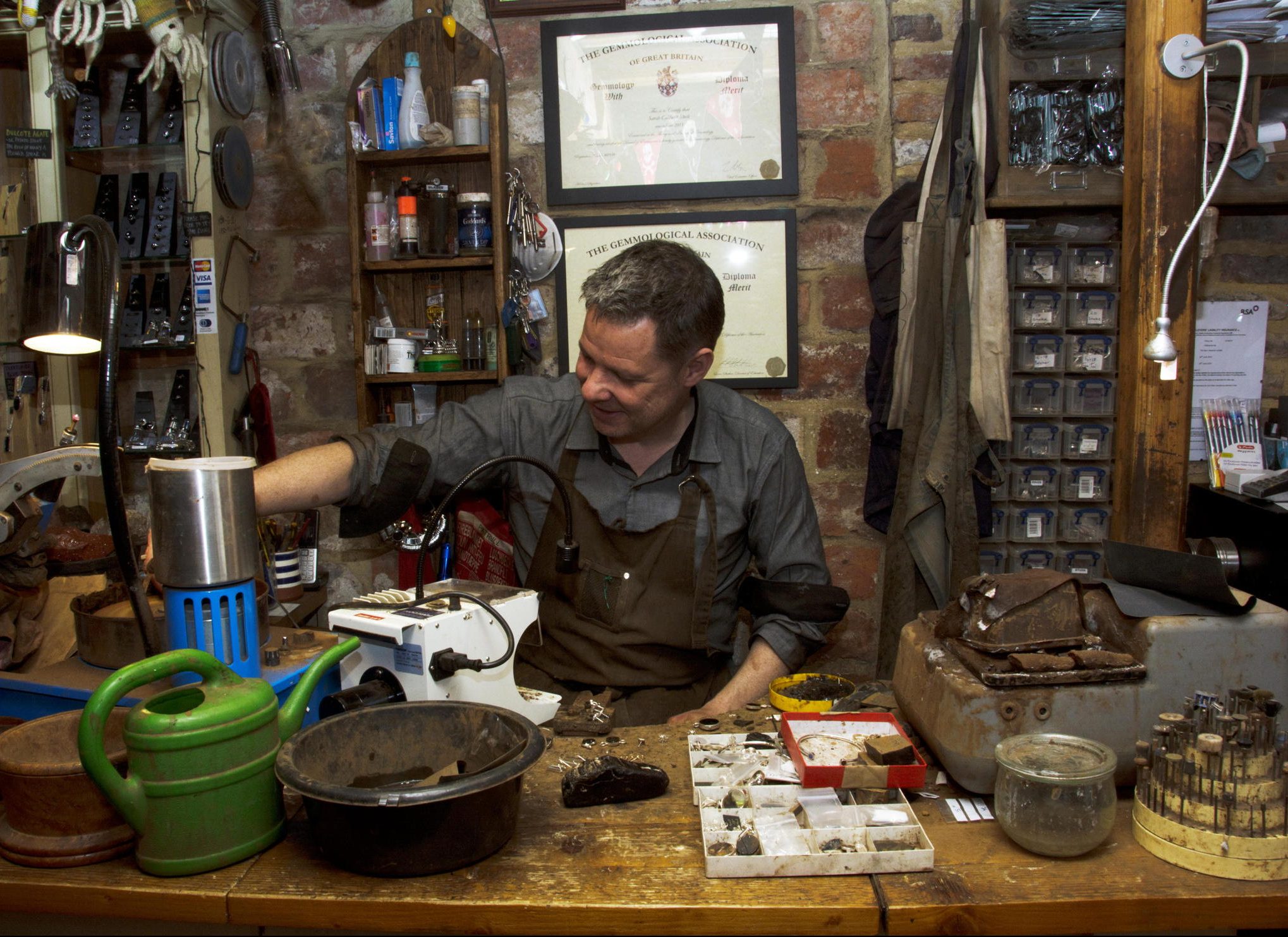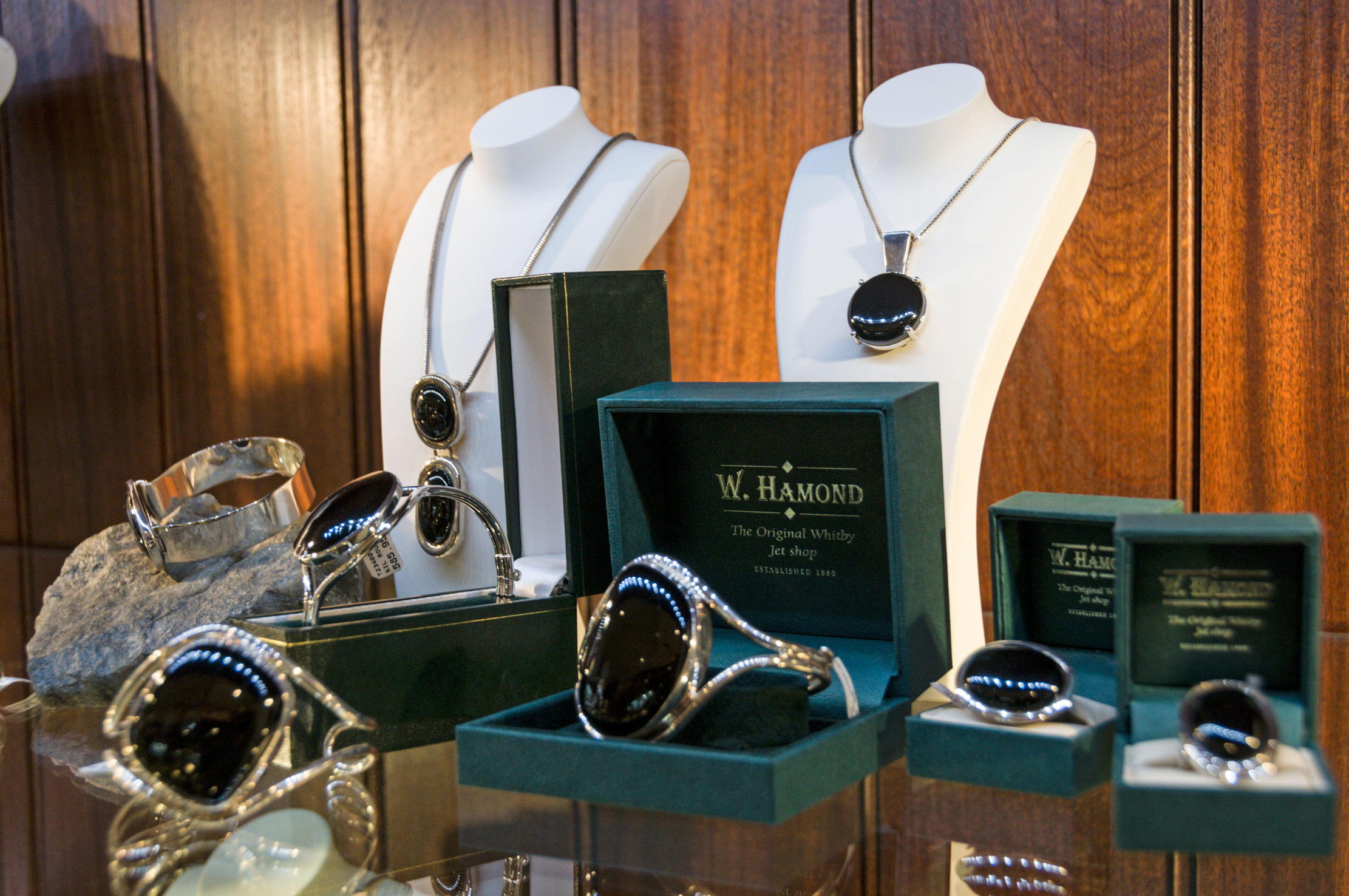What is Whitby jet? The once-prized northern native gemstone that is darker than the night
This 'beautiful, natural, heritage material deserves to be reassessed' and is slowly regaining popularity. Harry Pearson talks to the makers still working with this ancient gemstone.


Two reasons why the North Yorkshire town of Whitby is so celebrated are dark, smooth and elegant. One is Count Dracula, the other is Whitby jet. That both are associated with mournful Victorians also accounts for Whitby’s attraction to those of a Gothic frame of mind.
Popular legend has it that jet is the fossilised remains of an ancestor of a monkey puzzle tree deposited on the Yorkshire coast 180 million years ago. ‘That’s a myth,’ asserts Whitby-based gemmologist Sarah Steele of Ebor Jet-works. ‘Whitby jet was actually formed from many different types of wood, but I think Victorian jewellers liked the idea of the monkey puzzle tree. It’s certainly an appealing story.’
Whitby jet is light, warm to the touch, hard enough to carve and can be polished to a sheen. Its most noted quality is the depth of its blackness. As Shakespeare has it in Henry VI: ‘Black, forsooth: coal-black as jet.’ When you look into a piece, you almost feel as if you’ve been absorbed into its darkness. ‘The Aztecs used jet to produce mirrors, through which they believed they could contact the spirit world,’ says Ms Steele. ‘And Elizabethan alchemists thought jet might be the philosopher’s stone — there is something magical about it.’

During more than 20 years of working with Whitby jet, London-based jeweller Jaqueline Cullen has created pieces for the ‘Mission: Impossible’ and ‘Harry Potter’ films, as well as the model Naomi Campbell and actress Helena Bonham-Carter. ‘I discovered it in my final year at Central Saint Martins,’ notes Ms Cullen. ‘I had a box of samples from a gem dealer and when I picked up the jet, I had a eureka moment. It is an amazing material. I love the sculptural aspect of carving it. Jet has its own mind — you have to work with it, you can’t force it.’
Whitby jet was prized in the Bronze Age and by the Romans (who believed it protected against snake bites) and traded by the Vikings from their great settlement in York. In the Middle Ages, Monks from Whitby Abbey carved rosary beads from jet and farmers hung jet crosses on barn doors to ward off witches.
The first jet workshop in Whitby was set up by retired naval officer Capt Tremlett in 1808. Influenced by the success of the Baltic amber trade (coincidentally, the Romans called jet ‘black amber’), he employed lathe workers to turn beads. By the mid 19th century, the trade was sufficiently established to feature in the Great Exhibition.
Here, the jewellery of Isaac Greenbury caught the eye of Empress Eugenie of France, considered the most fashionable woman in the world. Queen Theresa of Bavaria bought some and, importantly, so did Queen Victoria — from Thomas Andrew, a Whitby jeweller who became ‘jet-ornament manufacturer’ to Her Majesty. After Prince Albert’s death in 1861, the Queen went into prolonged mourning and insisted on it being the only gemstone to be worn at Court, an edict that lasted until her death in 1901.
Exquisite houses, the beauty of Nature, and how to get the most from your life, straight to your inbox.

The effect of the Queen’s patronage was dramatic. In 1832, Whitby had two jet workshops employing 25 people; 50 years later, there were more than 200 workshops and close to 300 mines sunk into the cliffs, as well as those further inland in valleys such as Rosedale and Bilsdale. The trade employed 1,500 people and generated an annual turnover of some £100,000 (about £1.5 million today).
The accession of the racier Edward VII was a severe blow to jet. Jewellery made in Whitby tended to be ornate and chunky, which fared poorly with the more relaxed Art Nouveau styles. By 1911, the value of jet had fallen by two-thirds and the number of people in the Whitby workshops had shrivelled to only 40.
‘By the 1970s, the trade had pretty much died,’ laments Ms Steele. ‘It began to revive in the 1980s. People became more interested in locally produced goods: Whitby jet and Derbyshire blue john are Britain’s only native gemstones.’ Today, there are 15 shops selling jet jewellery in Whitby and, believes Ms Steele, ‘about a dozen of us making a living working with Whitby jet in the traditional way’.
Ms Cullen believes jet has been the victim of its Victorian success. ‘In the public mind, it’s retained strong associations with grief and a heavy, 19th-century style,’ she explains. ‘Whitby jet is a beautiful, natural, heritage material. It deserves to be reassessed.’

Credit: Getty
Who was the original Jack Russell who gave his name to one of Britain's favourite dog breeds?
Kate Green takes a look at the the legacy of Revd John Russell, the man who gave his name to

The kiwi fruit is from China — so how did it get its New Zealand-inspired name?
Martin Fone peels the layers back on the strange tale of how the kiwi fruit got its name.

Curious Questions: When — and why — did we stop wearing hats?
The hat was once as essential for leaving the house as a pair of trousers, but the sight of a

Credit: Getty
Curious Questions: Why do barristers and judges wear wigs?
Like marmalade on toast, saying sorry and the Shipping Forecast, there are few things more typically British than the courtroom
Harry Pearson is a journalist and author who has twice won the MCC/Cricket Society Book of the Year Prize and has been runner-up for both the William Hill Sports Book of the Year and Thomas Cook/Daily Telegraph Travel Book of the Year.
